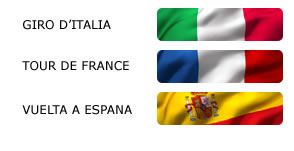

A step back in time to 1971, the 54th Giro d'Italia, when the pink race started from Puglia, specifically from Lecce. Now in its 108th edition, it's worth remembering.
The term "Grand Start" was not yet in vogue then, borrowed years later from the French Tour de France and sometimes overused here.
In the splendid, evocative setting of the Salento city, in the iconic pink color that characterizes many beautiful Baroque monuments centered around Piazza S. Oronzo, the typical pre-race and start operations of a grand tour took place.
It was the first start from Puglia, which found a successful replay in 2003, again with Lecce at the forefront, hosting the start and finish of the inaugural stage dubbed the "Salento tour" and ending with a large group sprint won by Alessandro Petacchi, who narrowly beat Mario Cipollini by a short head, as they would say in horse racing. Two sprinters of remarkable caliber and connected power, stars of those years' sprints.
But let's go back to 1971. The first competitive act of the 54th Giro was an unprecedented "team time trial" from Lecce to Brindisi, 62.200 km long, held on May 20th, and won by the Salvarani team - or rather, super-team - with all ten riders, under sports director Vittorio Adorni's orders, wearing the pink jersey: Emilio Casalini, Ottavio Crepaldi, Felice Gimondi, Ercole Gualazzini, Pietro Guerra, Antoine Houbrechts, Primo Mori, Gianni Motta, Roberto Poggiali, Dino Zandegù.
The mechanism required each rider to cover a 6.200 km segment before passing the baton, like in athletics relays, to the teammate in their designated section, marked by specific signs. The starting order of the teams was drawn the day before, and the baton was a tube-shaped object about 20 cm long with a spring-loaded eyelet to attach it to the horizontal tube or bike frame, at the rider's choice.
The route was essentially flat, crossing the characteristic Salento landscape with the Adriatic Sea on the right.
Ten teams, each with ten riders, started that Giro, in alphabetical order: Cosatto, Dreher, Ferretti, Filotex, G.B.C., Kas, Magniflex-Hertkamp, Salvarani, and Scic.
In second place in the prologue time trial, with times not counting for the general classification, was Molteni (without Merckx in that Giro), 3" behind, with Belgian Herman Van Springel standing out, and in third place, Scic from Parma at 44".
The average speed was 52.711 km/h on a splendid sunny day with some wind gusts.
Side note: four teams had a background in furniture, especially kitchens, like Cosatto, Ferretti, Salvarani, and Scic, the last two protagonists of a sporting and commercial derby from Parma and surroundings. Within Salvarani, the signals of the lively rivalry between Felice Gimondi and Gianni Motta were not invisible, though somewhat concealed.
And that Giro was won by Swede Gosta Petterson of Ferretti Cucine, a Tuscan team led with sagacious ability by Alfredo Martini, already with his faithful mechanic friend, Franco Vita, by his side.
Gosta was the spearhead of the four Petterson brothers, all turned professional, with a remarkable palmares in time trials and excellent performances in the 100 km team time trial. More of a family than a team effort for the four brothers.
And Lecce will live its rest day tomorrow after returning from Albania and the accreditation operations of people and vehicles that will join the pink caravan from there, while the day after tomorrow, Tuesday the 13th, it will be the finish location of the 4th stage of 189 km, altimetrically very simple, starting from the characteristic Alberobello, Pietramare location, to reach Lecce, with a final circuit and a predictable, spectacular group sprint.

Se sei giá nostro utente esegui il login altrimenti registrati.